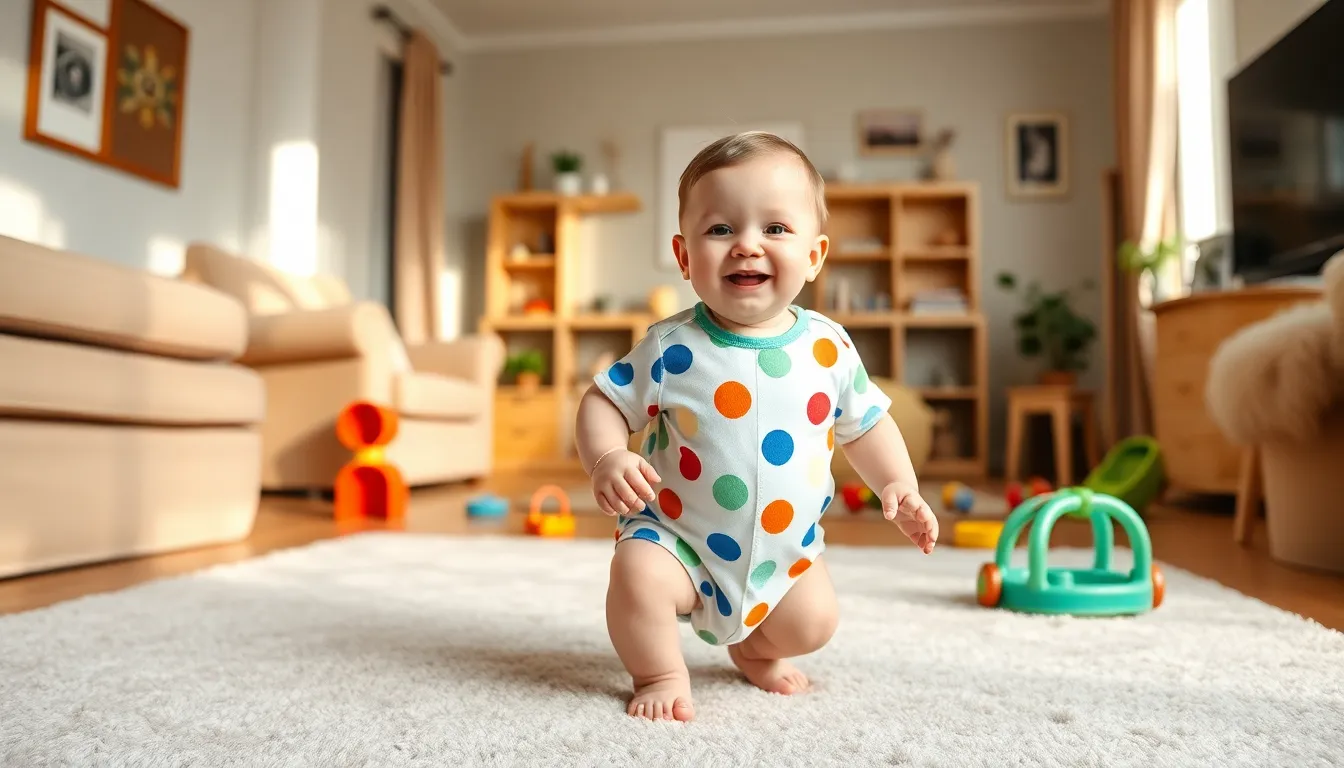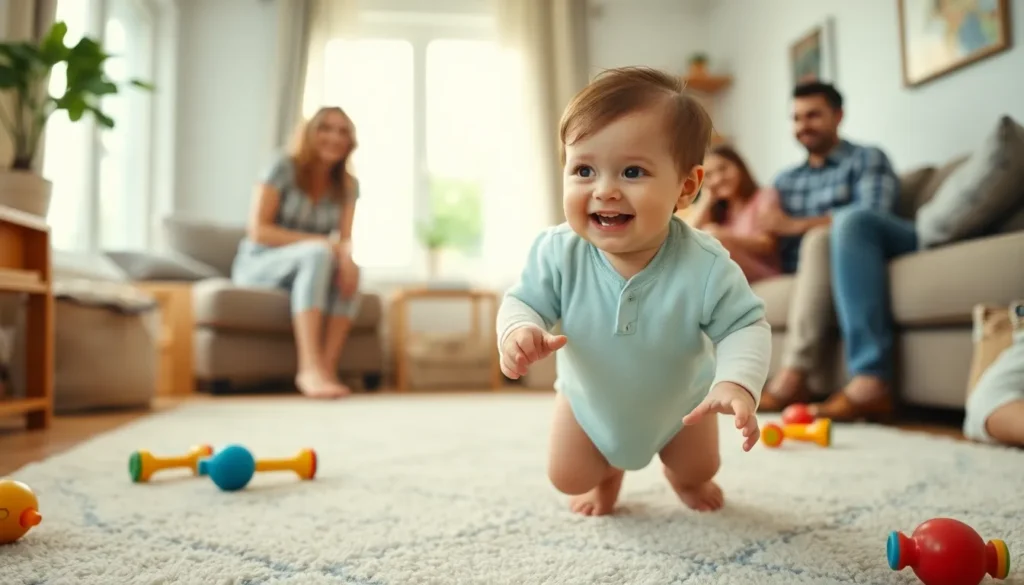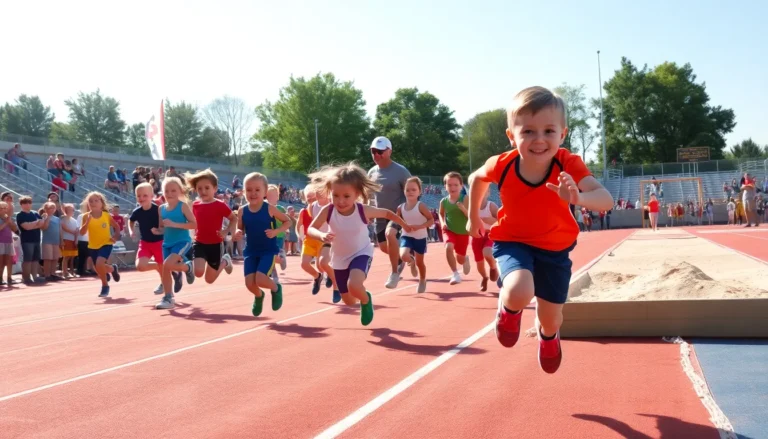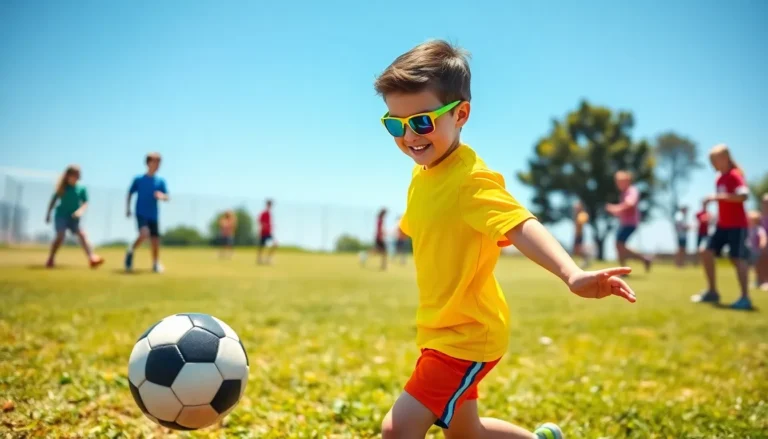Table of Contents
ToggleEvery parent knows the moment their baby takes those wobbly first steps is nothing short of magical. It’s like watching a tiny, uncoordinated superhero take flight for the first time. Those little feet, barely able to support their own weight, are about to embark on an adventure that’ll lead to countless giggles and inevitable tumbles.
Understanding Baby’s First Steps
Baby’s first steps signal an important milestone in development. This moment symbolizes not just physical growth, but also emotional progress for both the child and their family.
Importance of Milestones
Milestones serve as critical indicators of development. Achieving these milestones gives parents insights into their baby’s growth trajectory. First steps enhance coordination and balance, which fosters confidence. Witnessing a child master walking often brings immense joy and pride. Emotional connections deepen during these milestones, as family members celebrate together. Recognizing the significance of each milestone helps parents provide appropriate support along the way.
Typical Age Range for Walking
Most babies take their first steps between 9 and 15 months. This timeline varies from child to child, as every baby develops at their own pace. Some begin walking as early as 8 months, while others may start as late as 18 months. Factors influencing this range include muscle strength, balance skills, and overall motivation. Encouraging exploration and providing safe spaces can assist in reaching this exciting phase. Parents play a vital role in facilitating experiences that promote walking.
Preparing for Baby’s First Steps

Creating a supportive environment for a baby’s first steps is essential for their development. Safety and encouragement play crucial roles during this exciting phase.
Safe Environment
Establishing a safe space allows a baby to explore freely. Remove sharp objects, clutter, and breakables from pathways. Use soft rugs or mats to cushion potential falls. Gate stairs and block off hazardous areas to prevent accidents. Even furniture can pose risks; ensure items are stable and rounded. Soft furniture or cushions can serve as safe landing spots. Parents should regularly check their child’s environment for new hazards, ensuring safety remains a priority as they grow and become more mobile.
Encouraging Movement
Encouraging a baby to move fosters confidence and exploration. Provide stable objects for support, like low tables or sturdy chairs. Use toys that promote standing and reaching, like push toys or activity centers. Engage in playful activities that motivate movement, such as crawling or chasing after a favorite object. Parents can also demonstrate movement by standing together or using fun sounds to capture attention. Celebrate each small achievement, reinforcing the baby’s efforts and making the experience enjoyable. The combination of support and encouragement propels a baby toward those first crucial steps.
Signs That Your Baby Is Ready to Walk
Recognizing the signs of readiness is crucial for parents. Some indicators reveal physical and emotional development milestones.
Physical Development Indicators
Babies typically show increased muscle strength as they approach walking. Gaining stability while standing, they use furniture and walls for support. Baby may bounce and rock on their feet, showcasing coordination. Intentional movements display a desire to explore their environment. Notable balance also signals readiness, as babies might take a few steps while maintaining posture. Crawling speed often increases, hinting at developing mobility. Lastly, consistent reaching for objects reflects confidence in movement.
Emotional Readiness
Emotional signs play a critical role in walking readiness. Babies often display excitement and curiosity during playtime, eager to engage with their surroundings. They may seek eye contact and grin when attempting new activities. Trusting their caregivers fosters a sense of security, encouraging exploration. Expressing frustration when unable to reach items demonstrates determination. An increased interest in peer interaction can motivate them to walk toward friends. Overall, emotional growth complements physical readiness, paving the way for those first steps.
Tips for Supporting Baby’s First Steps
Supporting a baby during this exciting milestone involves creating a nurturing environment. Parents can focus on several key aspects to ensure success.
Choosing the Right Footwear
Selecting appropriate footwear plays a vital role in a baby’s walking experience. Soft, flexible shoes provide the necessary support while allowing natural foot movement. Prioritize lightweight materials that won’t restrict motion. Infants often benefit from shoes with a non-slip sole, promoting stability on various surfaces. When choosing sizes, ensure a proper fit to accommodate growing feet while preventing blisters or discomfort. Allowing babies to practice barefoot indoors also strengthens their footing and enhances balance.
Activities to Promote Walking
Engaging in activities that encourage walking helps develop a baby’s confidence and coordination. Simple games like chase or encouraging crawling toward toys can motivate movement. Parents can create a fun obstacle course using cushions or furniture for babies to maneuver around. Encouraging standing during playtime enhances muscle strength; support can come from holding onto furniture or parents’ hands. Regularly celebrating progress, no matter how small, builds excitement and emotional attachment to walking, reinforcing the importance of these early steps.
Baby’s first steps are a remarkable journey filled with excitement and growth. This milestone not only marks physical development but also strengthens emotional bonds within the family. As parents provide a safe and encouraging environment, they play a crucial role in helping their child navigate this new world of mobility. Celebrating each small achievement fosters confidence and motivation, making the experience even more rewarding. With patience and support, families can cherish these moments as their little ones take their first steps toward independence. Embracing this transformative phase will create lasting memories and pave the way for many more milestones to come.








